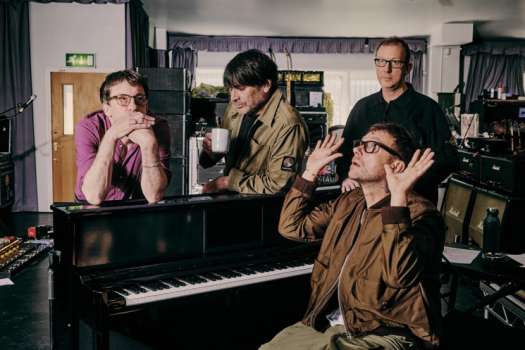Inevitably, given the issue's cultural ubiquity, everyone has heard a story of how the native people have been screwed over by the government and dumped into squalor fending for themselves while the needs of the rest of the population are catered to.
In the case of the Northwest Alaskan village of Kivalina, a traditional Inupiat Eskimo community located north of the Arctic Circle, consisting of fewer than 400 residents, the usual story is taken to an entirely new level. The village's existence is being threatened by extreme shifts in climate change, which prevent the sea ice from forming as it once did, increasing the rate of erosion of the tiny barrier island it sits upon.
The people of Kivalina need help to relocate before it's too late, but due to the minuscule population and the extremely high cost (upwards of $400 million) the U.S. government has been hesitant to foot the enormous bill. This forced the residents to take matters into their own hands, opting instead to file a lawsuit against the energy industry, claiming that the escalation in toxic emissions through their business dealings have increased greenhouse gasses, thereby directly contributing to the destruction of their town.
The villagers join forces with a slick Houston lawyer to file their claim against the energy giants, thrusting their life or death battle into the worldwide spotlight. Their plight is dire, as they are but a small town in the rural Arctic north going up against a slew of massive corporations.
Director Ben Addelman opts not to focus solely on the court case and instead examines some of the greater challenges these people are faced with: poverty, unemployment, a town divided amongst its own kind and the trials faced by a people on the verge of losing their identity. We learn that this whaling community hasn't been able to catch a whale since 1994 and how this correlates to the dying spirit of their vibrant Eskimo culture.
Addelman captures the gloom and doom on camera, often digging in and showcasing the grittier parts of this town to emphasize the overall hopelessness the community faces. The lack of a strong narrative detracts from the story and, at times, the talking head interviews bog down the trajectory. However, the beautiful cinematography brings the emotion alive on-screen.
It is a shame the director wasn't able to interview any of the energy industry defendants to get their rebuttal, leaving the film entirely one-sided, underscoring the vulnerability and struggle of people that have been forgotten and thrown on the wayside of pollution.
(eOne)In the case of the Northwest Alaskan village of Kivalina, a traditional Inupiat Eskimo community located north of the Arctic Circle, consisting of fewer than 400 residents, the usual story is taken to an entirely new level. The village's existence is being threatened by extreme shifts in climate change, which prevent the sea ice from forming as it once did, increasing the rate of erosion of the tiny barrier island it sits upon.
The people of Kivalina need help to relocate before it's too late, but due to the minuscule population and the extremely high cost (upwards of $400 million) the U.S. government has been hesitant to foot the enormous bill. This forced the residents to take matters into their own hands, opting instead to file a lawsuit against the energy industry, claiming that the escalation in toxic emissions through their business dealings have increased greenhouse gasses, thereby directly contributing to the destruction of their town.
The villagers join forces with a slick Houston lawyer to file their claim against the energy giants, thrusting their life or death battle into the worldwide spotlight. Their plight is dire, as they are but a small town in the rural Arctic north going up against a slew of massive corporations.
Director Ben Addelman opts not to focus solely on the court case and instead examines some of the greater challenges these people are faced with: poverty, unemployment, a town divided amongst its own kind and the trials faced by a people on the verge of losing their identity. We learn that this whaling community hasn't been able to catch a whale since 1994 and how this correlates to the dying spirit of their vibrant Eskimo culture.
Addelman captures the gloom and doom on camera, often digging in and showcasing the grittier parts of this town to emphasize the overall hopelessness the community faces. The lack of a strong narrative detracts from the story and, at times, the talking head interviews bog down the trajectory. However, the beautiful cinematography brings the emotion alive on-screen.
It is a shame the director wasn't able to interview any of the energy industry defendants to get their rebuttal, leaving the film entirely one-sided, underscoring the vulnerability and struggle of people that have been forgotten and thrown on the wayside of pollution.




